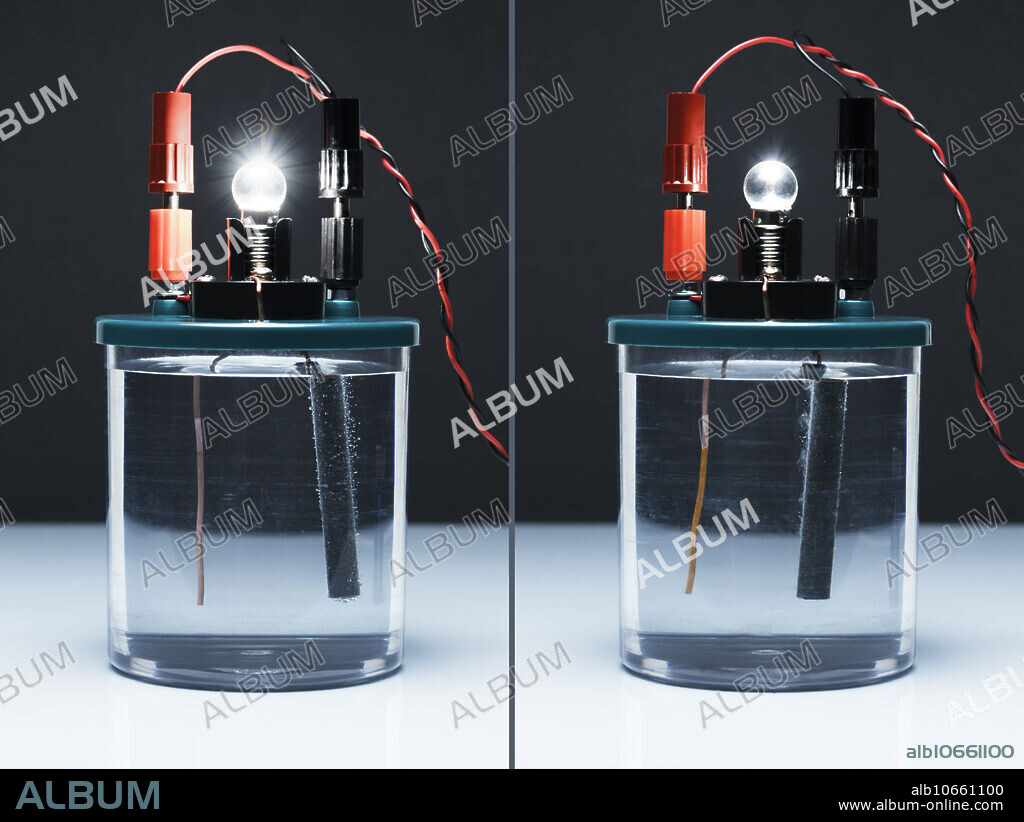alb10661100
Electrical conductivity comparison

|
Añadir a otro lightbox |
|
Añadir a otro lightbox |



¿Ya tienes cuenta? Iniciar sesión
¿No tienes cuenta? Regístrate
Compra esta imagen.
Selecciona el uso:

Título:
Electrical conductivity comparison
Descripción:
Ver traducción automática
Electrical conductivity comparison. A solution conducts electric current when it contains charged particles (ions). A circuit consisting of a battery, two electrodes (copper and graphite) in a jar, and a light bulb is used to test electrical conductivity of different solutions. When the jar is filled with 0.1 M hydrochloric acid (HCl), the bulb lights up brightly (left frame). Hydrochloric acid is a strong acid and a strong electrolyte, it completely dissociates into H+ and Cl- ions that carry electric charges in the solution. When the jar is filled with 0.1 M acetic acid (CH3COOH), the bulb lights up but less brightly than with hydrochloric acid (right frame). Acetic acid is a weak organic acid and a weak electrolyte, it only partially dissociates into H+ and CH3COO- ions. Therefore, for the same molar concentration, acetic acid produces a lower concentration of ions needed to carry electric charges in the solution.
Crédito:
Album / Turtle Rock Scientific/Science Source
Autorizaciones:
Tamaño imagen:
5800 x 4356 px | 72.3 MB
Tamaño impresión:
49.1 x 36.9 cm | 19.3 x 14.5 in (300 dpi)
Palabras clave:
ACÉTICO • ACIDO • ACTUALES • CONDUCTIVIDAD • DEBIL • ELECTRICIDAD • ELECTROLITO • ELECTROQUIMICA • FÍSICA (CIENCIA) • GLOBO • IONES • LAMPARA • LUZ • QUIMICA • VINAGRE
 Pinterest
Pinterest Twitter
Twitter Facebook
Facebook Copiar enlace
Copiar enlace Email
Email
